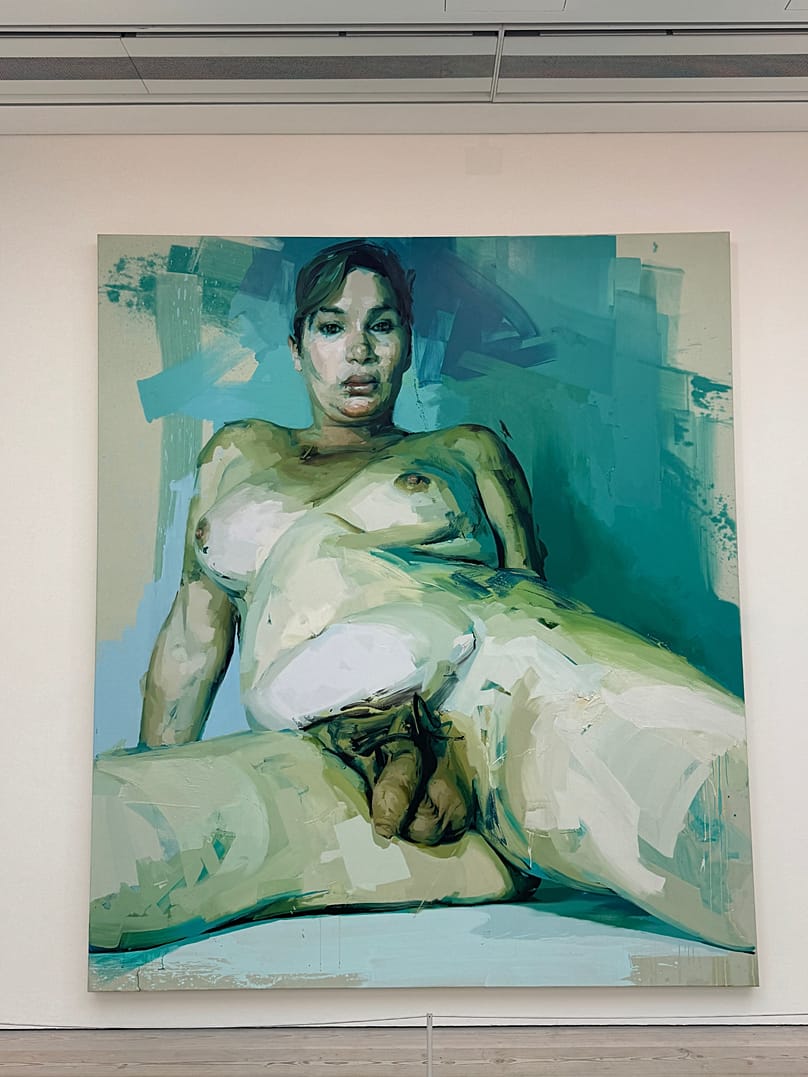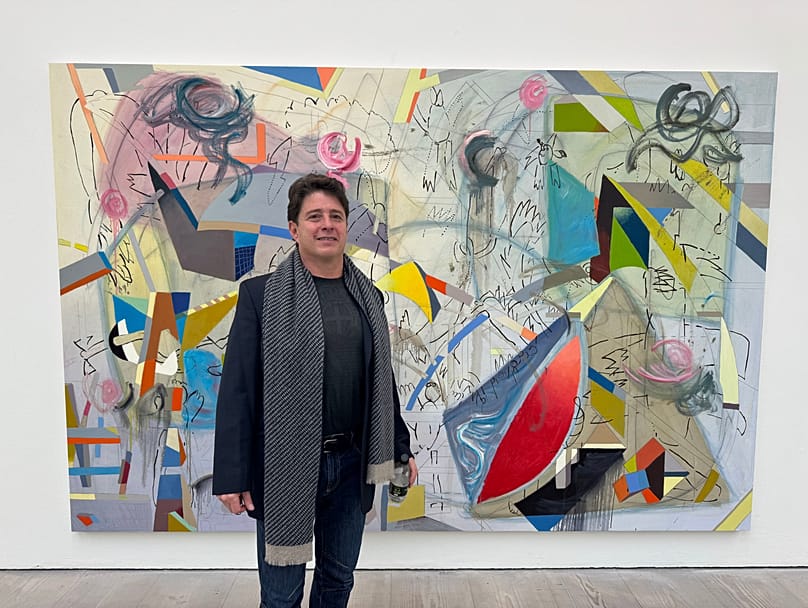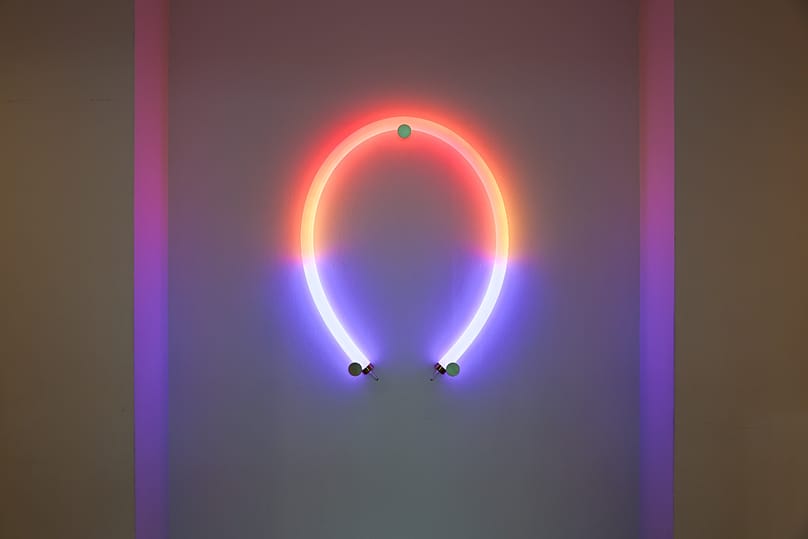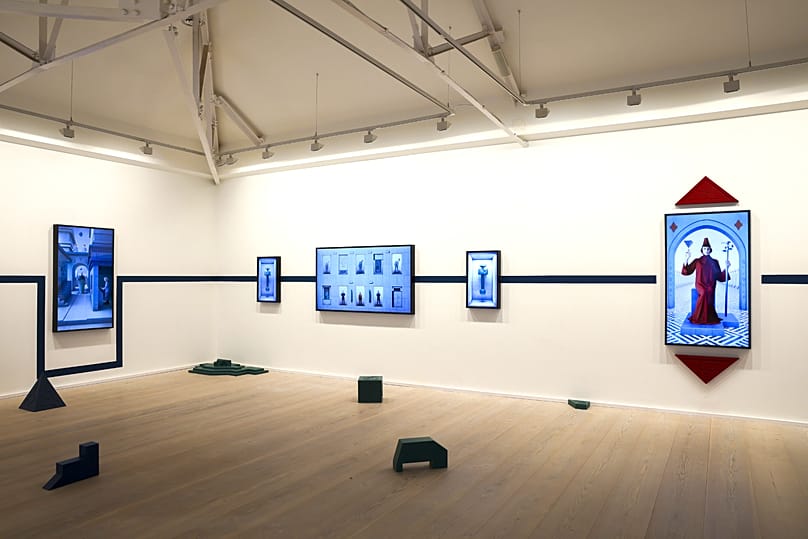The Long Now: London's Saatchi Gallery celebrates 40 years of contemporary experimentation
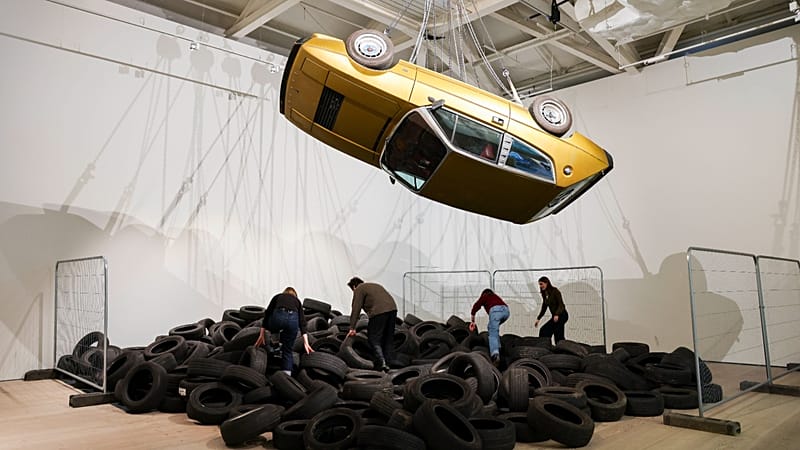
Forty years after Charles Saatchi first opened his doors to a then-disused paint factory in north London, the Saatchi Gallery remains a benchmark for contemporary art - a space where the new, the daring and the downright unexpected collide.
Its latest exhibition, The Long Now, is both a celebration of that legacy and a statement of intent for the future.
Spread across nine huge, carefully curated white-walled rooms, over two floors, The Long Now is a breathtaking mix of the physical and the digital, and of artists both acclaimed and newly emerging.
Curated by former Senior Director Philippa Adams, it looks back at the gallery’s history of risk-taking - from the YBAs (Young British Artists_)_ of the 1990s to the multimedia innovators of today.
A legacy reimagined
For those who’ve followed the Saatchi Gallery’s evolution - from its Boundary Road beginnings in 1985 to its stunning Duke of York’s HQ location in Chelsea - this show feels like both a retrospective and a provocation.
You'll find Jenny Saville’s monumental Passage (2004), a powerful study of the human body. Elsewhere, Allan Kaprow’s YARD - a chaotic playground of stacked car tyres - invites visitors to climb, move and lose themselves within it. Directly above it hangs Conrad Shawcross’s Golden Lotus (Inverted), a vintage Lotus car transformed into a spinning sculpture, blaring with disco music.
And then there’s Richard Wilson’s 20:50, perhaps the most iconic installation in Saatchi’s history - a large room, full waist-high of recycled engine oil. The surface is crystal clear and mirrors the architecture around it. Light from the large windows reflects the sky across the black surface. The smell of oil hits you before the view does. It’s trippy, meditative and a little unsettling. First presented in 1987, the work feels more relevant than ever amid the climate anxieties of our time.
New voices, new mediums
Alongside art-world giants like Damien Hirst, Olafur Eliasson andJenny Saville, the exhibition features fresh voices from artists still carving out their place in the scene.
Colombian painter Alejandro Ospina’s large-scale, abstract canvases pop with colour and shapes. He merges brushstrokes from modernist masters like Miró and Kandinsky with the imagery of the internet as well as the innocent doodles of his two young children.
The result is a joyful combination of tradition and modernity. “So in these paintings, you’ll find drawings from artists like Gorky, Miró, and Kandinsky. They’re layered alongside doodles from my kids. The masters’ brushstrokes become the larger gestures, while the children’s drawings add this beautiful spontaneity,” Ospina told Euronews Culture.
It’s his second time showing at Saatchi, and he admits the space still impresses him: “I love this place - the light, the space, the attention to detail. And to have my work featured on the poster downstairs? I’m quite chuffed, honestly,” he said.
On the floor above you can find Frankie Boyle’s Ecliptic, a three-minute installation that simulates the passage of a day - sunrise to sunset - through a bespoke LED system she designed herself.
“I was born with a speech and language disorder, so I started life non-verbal,” Boyle told Euronews Culture. “My whole way of communicating was through visuals. That made me very attuned to how people move and feel within environments - and to how light itself is a kind of language that goes beyond words.”
Though deceptively simple in form, Ecliptic uses double-sided LED tubes to emit light in two directions, creating subtle transitions and layered hues. “By layering different colours, I can move from sunrise to sunset, day into night, in a continuous flow,” she explained.
For Boyle, debuting at the Saatchi Gallery is a definite career milestone. “It feels incredible - it’s such an iconic space, but also one that’s open to all ages and types of artistic investigation. I love that accessibility.”
In a room just down from Boyle's Ecliptic you can explore the dystopian world of Chino Moya’s Deemona. This multi-screen installation imagines a future workplace designed and run entirely by AI - a “post-human” environment where artificial consciousnesses attempt to recreate humanity.
“Deemona is my attempt to imagine what an ideal human society might look like - one designed by a network of artificial consciousness,” Moya told Euronews Culture. “It’s set in a far distant future, after humans are gone, when a collective of neural networks decides to recreate the world of humans - but to improve it, according to what they think a perfect society should be.”
The installation combines TV screens and scattered sculptural works, creating a world that feels halfway between a corporate office and a mausoleum. “About 30 or 40 people worked on this project,” Moya said. “Besides being an artist, I’m also a film director, so I brought in a full production crew from my company, Black Dog - which is part of Ridley Scott’s group of companies. It was essentially a full-scale film shoot.”
"A platform for artists to challenge conventions"
The Long Now ultimately feels less like a greatest-hits show and more like a conversation between decades - between the physical and digital, the past and future.
It’s a reminder that Saatchi Gallery’s greatest contribution to culture hasn’t just been discovering new artists but creating a space where experimentation is encouraged and celebrated.
As Philippa Adams put it, “At its heart, The Long Now reaffirms the Gallery’s role as a platform for artists to challenge conventions and shape conversations that extend beyond the walls.”
Today


